 Technology peripherals
Technology peripherals
 AI
AI
 iPhone renders a 300-square-meter room in real time, reaching centimeter-level accuracy! Google's latest research: NeRF is not bankrupt yet
iPhone renders a 300-square-meter room in real time, reaching centimeter-level accuracy! Google's latest research: NeRF is not bankrupt yet
iPhone renders a 300-square-meter room in real time, reaching centimeter-level accuracy! Google's latest research: NeRF is not bankrupt yet
3D real-time rendering of large scenes can be completed with a computer or even a mobile phone.
Every blind corner from the living room to the master bedroom, storage room, kitchen, and bathroom can be realistically rendered on the computer, just like shooting a video of the real thing.
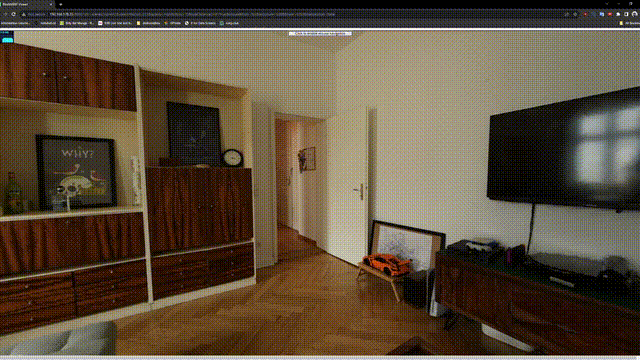
Moreover, you can also complete complex scene rendering on an iPhone.
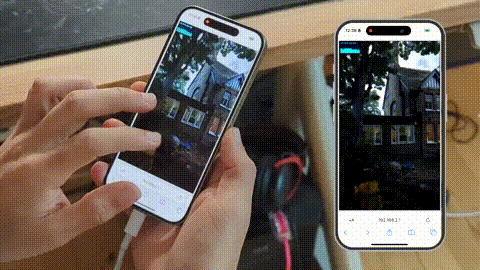
Researchers from Google, Google DeepMind and the University of Tübingen recently proposed a new technology SMERF.
It can render large view scenes in real time on various devices such as smartphones and laptops.

Paper address: https://arxiv.org/pdf/2312.07541.pdf
Essence Technically speaking, SMERF is a method based on NeRFs and relies on MERF (Memory-Efficient Radiance Fields), which is more memory efficient.
NeRF is dead?
Currently, Radiance fields have become a powerful and easy-to-optimize representation for reconstructing and re-rendering photorealistic real-world 3D scenes.
In contrast to explicit representations such as meshes and point clouds, radiation fields are typically stored as neural networks and rendered using volumetric ray travel.
Given a large enough computational budget, neural networks can concisely represent complex geometries and view-dependent effects.
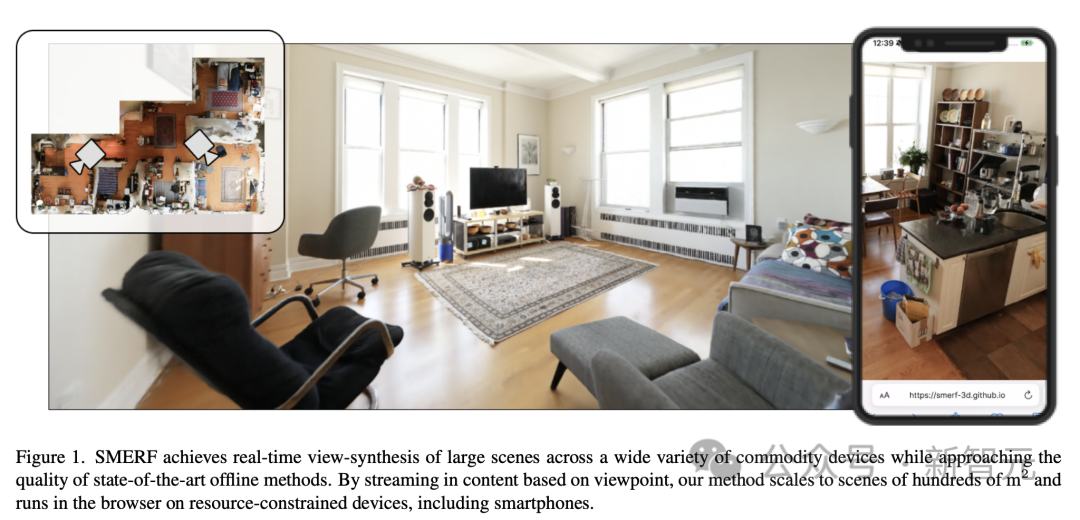
#As a volumetric representation, the number of operations required to render an image is measured in the number of pixels rather than the number of primitives (e.g. triangles), giving the best performance The best models require tens of millions of network evaluations.
Therefore, real-time methods of radiation fields make concessions in terms of quality, speed, or representation size, and whether such representations can compete with alternatives such as Gaussian Splatting , remains an open question.
In the latest research, the author proposes a scalable method to achieve higher fidelity real-time large-space rendering than ever before.
SMERF renders in real time with centimeter-level accuracy
SMERF is specially designed for learning large 3D representations, such as the rendering of houses.
Google and other researchers combined a hierarchical model partitioning scheme, in which different parts of the space and learning parameters are represented by different MERFs.
This not only increases model capacity, but also limits computational and memory requirements. Because large 3D representations like this cannot be rendered in real time with classic NERF.
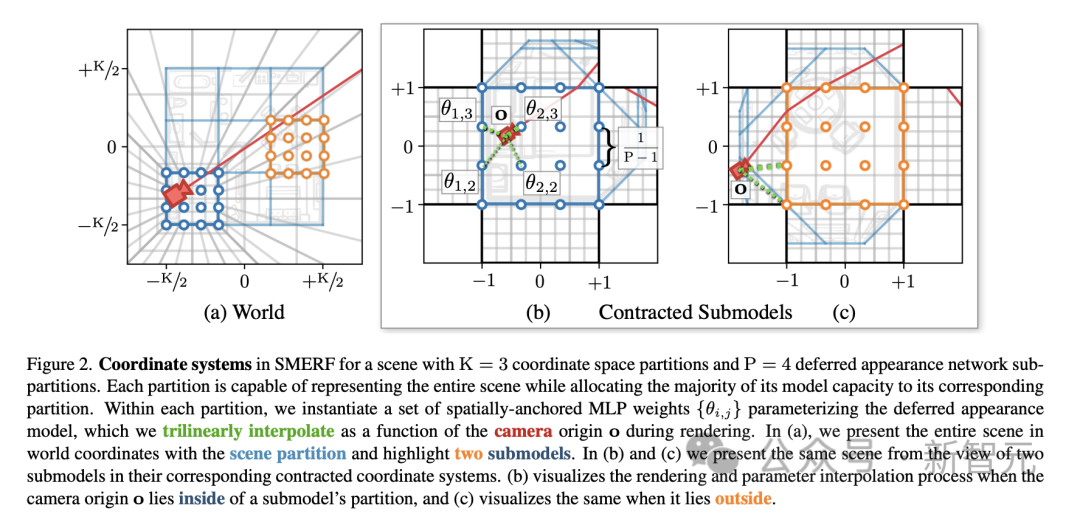
Coordinate system of a scene in SMERF with K=3 coordinate space partitions and P=4 delayed appearance network sub-partitions
In order to improve the rendering quality of SMERF, the research team also used a "teacher-student" distillation method.
In this method, the already trained high-quality Zip-Nerf model (teacher) is used to train a new MERF model (student).
As shown below, the overall process of "teacher supervision". The teacher model provides photometric supervision by rendering colors and geometric supervision by volumetric weighting along camera rays. Both teacher and student operate on the same set of light intervals.
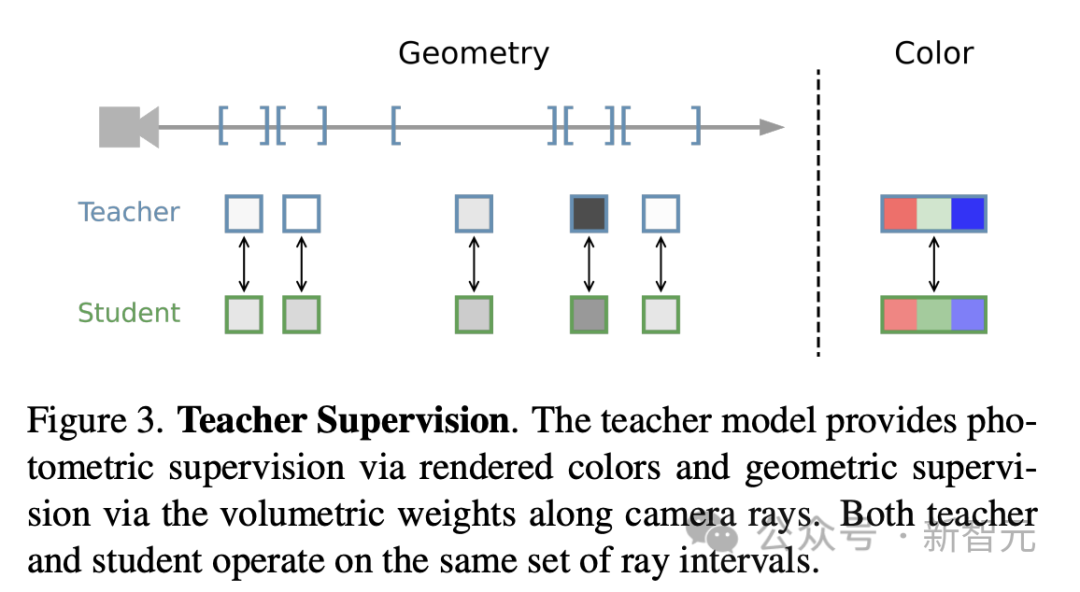
This approach allows researchers to transfer the detail and image quality of powerful Zip-Nerf models to more efficient and faster structures.
This is especially useful for apps on less powerful devices such as smartphones and laptops.
Experimental evaluation
The researchers first evaluated the method on the four major scenarios introduced by Zip-NeRF: Berlin, Alameda, and London and New York.
Each of these scenes were taken from 1,000-2,000 photos using a 180° fisheye lens. For a comprehensive comparison with 3DGS, the researchers cropped the photos to 110° and used COLMAP to re-estimate the camera parameters.
The results shown in Table 1 show that for moderate spatial subdivisions K, the accuracy of the state-of-the-art methods significantly exceeds MERF and 3DGS.
As K increases, the reconstruction accuracy of the model improves and is close to the accuracy of its Zip-NeRF teacher. When K=5, the difference is less than 0.1 PSNR and 0.01 SSIM.
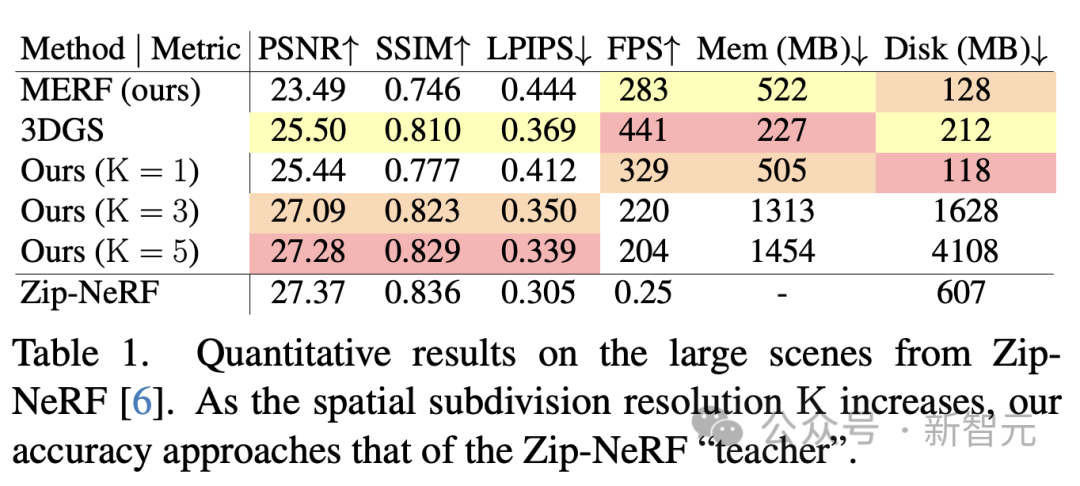
The researchers also found that these quantitative improvements underestimated the qualitative improvements in reconstruction accuracy, as shown in Figure 5.
In large scenes, the SMERF method consistently models thin geometry, high-frequency textures, specular highlights, and distant content beyond the reach of real-time baselines.
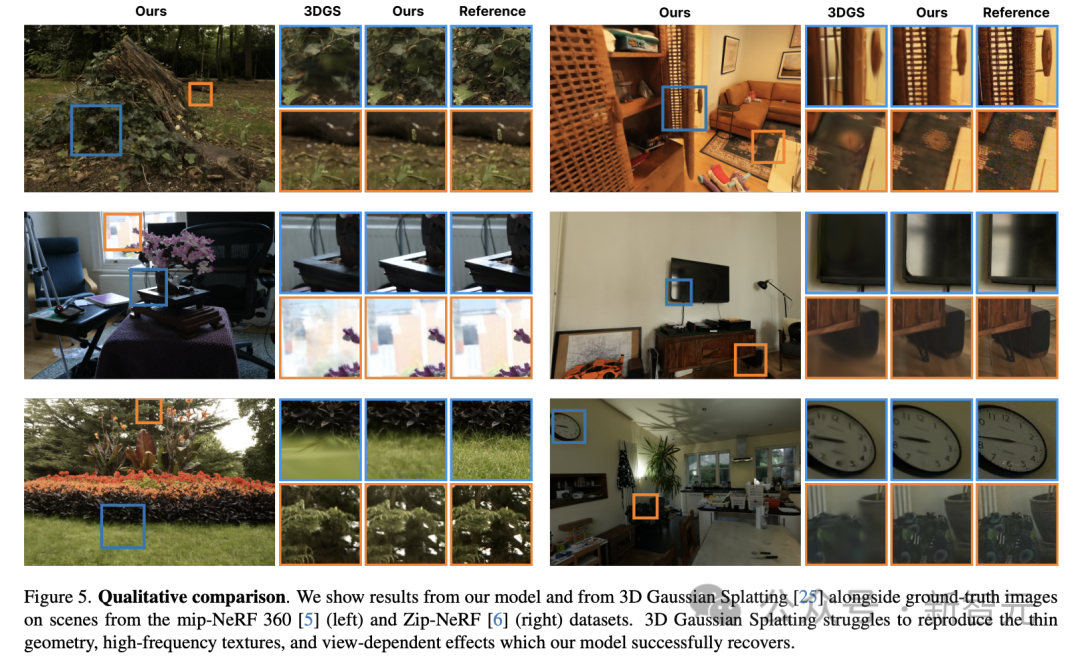
#At the same time, the researchers found that increasing sub-model resolution naturally improves quality, especially in terms of high-frequency textures.
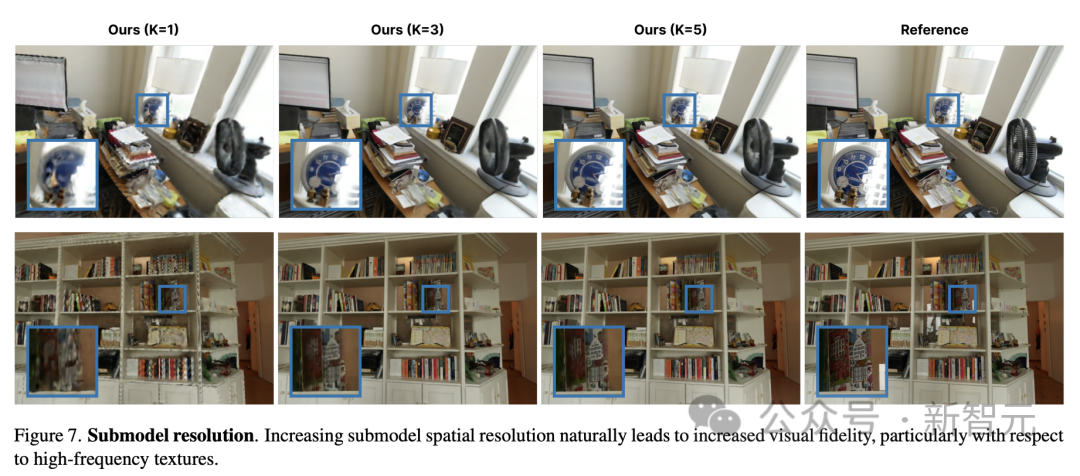
In fact, the researchers found that the latest rendering method is almost indistinguishable from Zip-NeRF, as shown in Figure 8.

Additionally, the researchers further evaluated the state-of-the-art method on the mip-NeRF 360 dataset of indoor and outdoor scenes.
These scenes are much smaller than those in the Zip-NeRF dataset, so no spatial subdivision is required to obtain high-quality results. As shown in Table 2, the K=1 version of the model outperforms all previous real-time models in this benchmark in terms of image quality and is comparable in rendering speed to 3DGS.

Figures 6 and 8 qualitatively illustrate this improvement. The method proposed by the researchers is much better at representing high-frequency geometry and textures. , while eliminating distracting flotsam and fog.
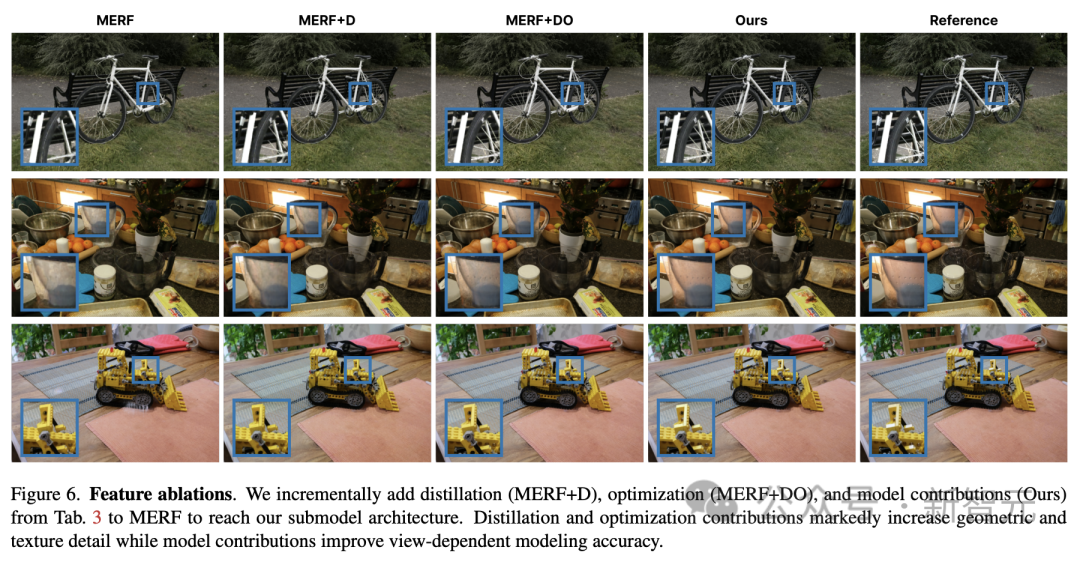
Web pages can transmit realistic 3D spaces
Once trained, SMERF can be used in browsers Rollup enables full 6 degrees of freedom navigation with real-time rendering on popular smartphones and laptops.
Everyone knows that the ability to render large 3D scenes in real time is important for a variety of applications, including video games, virtual augmented reality, and professional design and architecture applications.
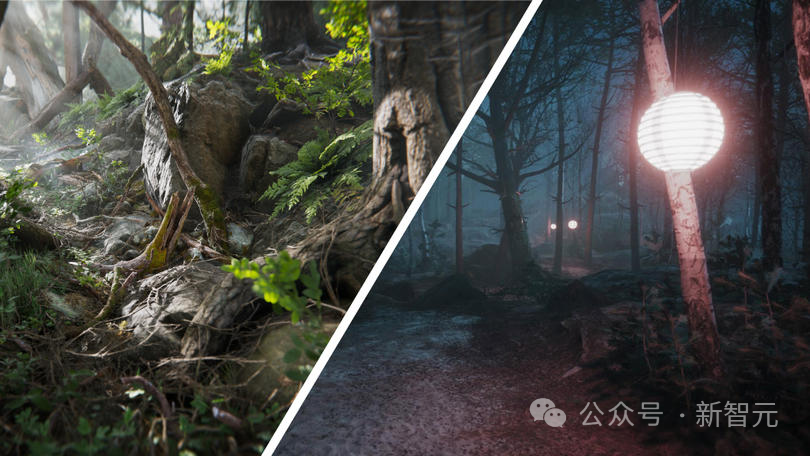
For example, in Google Immersive Maps, real-time navigation is possible.
However, the latest methods proposed by teams such as Google also have certain limitations. Although SMERF has excellent reconstruction quality and storage efficiency, it has high storage cost, long loading time, and heavy training workload.
However, this study shows that NeRFs and similar radiation fields may still have advantages in the future compared with three-dimensional Gaussian stitching methods.
The above is the detailed content of iPhone renders a 300-square-meter room in real time, reaching centimeter-level accuracy! Google's latest research: NeRF is not bankrupt yet. For more information, please follow other related articles on the PHP Chinese website!

Hot AI Tools

Undresser.AI Undress
AI-powered app for creating realistic nude photos

AI Clothes Remover
Online AI tool for removing clothes from photos.

Undress AI Tool
Undress images for free

Clothoff.io
AI clothes remover

AI Hentai Generator
Generate AI Hentai for free.

Hot Article

Hot Tools

Notepad++7.3.1
Easy-to-use and free code editor

SublimeText3 Chinese version
Chinese version, very easy to use

Zend Studio 13.0.1
Powerful PHP integrated development environment

Dreamweaver CS6
Visual web development tools

SublimeText3 Mac version
God-level code editing software (SublimeText3)

Hot Topics
 Open source! Beyond ZoeDepth! DepthFM: Fast and accurate monocular depth estimation!
Apr 03, 2024 pm 12:04 PM
Open source! Beyond ZoeDepth! DepthFM: Fast and accurate monocular depth estimation!
Apr 03, 2024 pm 12:04 PM
0.What does this article do? We propose DepthFM: a versatile and fast state-of-the-art generative monocular depth estimation model. In addition to traditional depth estimation tasks, DepthFM also demonstrates state-of-the-art capabilities in downstream tasks such as depth inpainting. DepthFM is efficient and can synthesize depth maps within a few inference steps. Let’s read about this work together ~ 1. Paper information title: DepthFM: FastMonocularDepthEstimationwithFlowMatching Author: MingGui, JohannesS.Fischer, UlrichPrestel, PingchuanMa, Dmytr
 The world's most powerful open source MoE model is here, with Chinese capabilities comparable to GPT-4, and the price is only nearly one percent of GPT-4-Turbo
May 07, 2024 pm 04:13 PM
The world's most powerful open source MoE model is here, with Chinese capabilities comparable to GPT-4, and the price is only nearly one percent of GPT-4-Turbo
May 07, 2024 pm 04:13 PM
Imagine an artificial intelligence model that not only has the ability to surpass traditional computing, but also achieves more efficient performance at a lower cost. This is not science fiction, DeepSeek-V2[1], the world’s most powerful open source MoE model is here. DeepSeek-V2 is a powerful mixture of experts (MoE) language model with the characteristics of economical training and efficient inference. It consists of 236B parameters, 21B of which are used to activate each marker. Compared with DeepSeek67B, DeepSeek-V2 has stronger performance, while saving 42.5% of training costs, reducing KV cache by 93.3%, and increasing the maximum generation throughput to 5.76 times. DeepSeek is a company exploring general artificial intelligence
 KAN, which replaces MLP, has been extended to convolution by open source projects
Jun 01, 2024 pm 10:03 PM
KAN, which replaces MLP, has been extended to convolution by open source projects
Jun 01, 2024 pm 10:03 PM
Earlier this month, researchers from MIT and other institutions proposed a very promising alternative to MLP - KAN. KAN outperforms MLP in terms of accuracy and interpretability. And it can outperform MLP running with a larger number of parameters with a very small number of parameters. For example, the authors stated that they used KAN to reproduce DeepMind's results with a smaller network and a higher degree of automation. Specifically, DeepMind's MLP has about 300,000 parameters, while KAN only has about 200 parameters. KAN has a strong mathematical foundation like MLP. MLP is based on the universal approximation theorem, while KAN is based on the Kolmogorov-Arnold representation theorem. As shown in the figure below, KAN has
 Hello, electric Atlas! Boston Dynamics robot comes back to life, 180-degree weird moves scare Musk
Apr 18, 2024 pm 07:58 PM
Hello, electric Atlas! Boston Dynamics robot comes back to life, 180-degree weird moves scare Musk
Apr 18, 2024 pm 07:58 PM
Boston Dynamics Atlas officially enters the era of electric robots! Yesterday, the hydraulic Atlas just "tearfully" withdrew from the stage of history. Today, Boston Dynamics announced that the electric Atlas is on the job. It seems that in the field of commercial humanoid robots, Boston Dynamics is determined to compete with Tesla. After the new video was released, it had already been viewed by more than one million people in just ten hours. The old people leave and new roles appear. This is a historical necessity. There is no doubt that this year is the explosive year of humanoid robots. Netizens commented: The advancement of robots has made this year's opening ceremony look like a human, and the degree of freedom is far greater than that of humans. But is this really not a horror movie? At the beginning of the video, Atlas is lying calmly on the ground, seemingly on his back. What follows is jaw-dropping
 The vitality of super intelligence awakens! But with the arrival of self-updating AI, mothers no longer have to worry about data bottlenecks
Apr 29, 2024 pm 06:55 PM
The vitality of super intelligence awakens! But with the arrival of self-updating AI, mothers no longer have to worry about data bottlenecks
Apr 29, 2024 pm 06:55 PM
I cry to death. The world is madly building big models. The data on the Internet is not enough. It is not enough at all. The training model looks like "The Hunger Games", and AI researchers around the world are worrying about how to feed these data voracious eaters. This problem is particularly prominent in multi-modal tasks. At a time when nothing could be done, a start-up team from the Department of Renmin University of China used its own new model to become the first in China to make "model-generated data feed itself" a reality. Moreover, it is a two-pronged approach on the understanding side and the generation side. Both sides can generate high-quality, multi-modal new data and provide data feedback to the model itself. What is a model? Awaker 1.0, a large multi-modal model that just appeared on the Zhongguancun Forum. Who is the team? Sophon engine. Founded by Gao Yizhao, a doctoral student at Renmin University’s Hillhouse School of Artificial Intelligence.
 AI subverts mathematical research! Fields Medal winner and Chinese-American mathematician led 11 top-ranked papers | Liked by Terence Tao
Apr 09, 2024 am 11:52 AM
AI subverts mathematical research! Fields Medal winner and Chinese-American mathematician led 11 top-ranked papers | Liked by Terence Tao
Apr 09, 2024 am 11:52 AM
AI is indeed changing mathematics. Recently, Tao Zhexuan, who has been paying close attention to this issue, forwarded the latest issue of "Bulletin of the American Mathematical Society" (Bulletin of the American Mathematical Society). Focusing on the topic "Will machines change mathematics?", many mathematicians expressed their opinions. The whole process was full of sparks, hardcore and exciting. The author has a strong lineup, including Fields Medal winner Akshay Venkatesh, Chinese mathematician Zheng Lejun, NYU computer scientist Ernest Davis and many other well-known scholars in the industry. The world of AI has changed dramatically. You know, many of these articles were submitted a year ago.
 Kuaishou version of Sora 'Ke Ling' is open for testing: generates over 120s video, understands physics better, and can accurately model complex movements
Jun 11, 2024 am 09:51 AM
Kuaishou version of Sora 'Ke Ling' is open for testing: generates over 120s video, understands physics better, and can accurately model complex movements
Jun 11, 2024 am 09:51 AM
What? Is Zootopia brought into reality by domestic AI? Exposed together with the video is a new large-scale domestic video generation model called "Keling". Sora uses a similar technical route and combines a number of self-developed technological innovations to produce videos that not only have large and reasonable movements, but also simulate the characteristics of the physical world and have strong conceptual combination capabilities and imagination. According to the data, Keling supports the generation of ultra-long videos of up to 2 minutes at 30fps, with resolutions up to 1080p, and supports multiple aspect ratios. Another important point is that Keling is not a demo or video result demonstration released by the laboratory, but a product-level application launched by Kuaishou, a leading player in the short video field. Moreover, the main focus is to be pragmatic, not to write blank checks, and to go online as soon as it is released. The large model of Ke Ling is already available in Kuaiying.
 The U.S. Air Force showcases its first AI fighter jet with high profile! The minister personally conducted the test drive without interfering during the whole process, and 100,000 lines of code were tested for 21 times.
May 07, 2024 pm 05:00 PM
The U.S. Air Force showcases its first AI fighter jet with high profile! The minister personally conducted the test drive without interfering during the whole process, and 100,000 lines of code were tested for 21 times.
May 07, 2024 pm 05:00 PM
Recently, the military circle has been overwhelmed by the news: US military fighter jets can now complete fully automatic air combat using AI. Yes, just recently, the US military’s AI fighter jet was made public for the first time and the mystery was unveiled. The full name of this fighter is the Variable Stability Simulator Test Aircraft (VISTA). It was personally flown by the Secretary of the US Air Force to simulate a one-on-one air battle. On May 2, U.S. Air Force Secretary Frank Kendall took off in an X-62AVISTA at Edwards Air Force Base. Note that during the one-hour flight, all flight actions were completed autonomously by AI! Kendall said - "For the past few decades, we have been thinking about the unlimited potential of autonomous air-to-air combat, but it has always seemed out of reach." However now,





